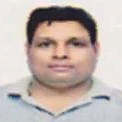
Shekhar Karanwal
Work place: Computer Science and Engineering Department, Graphic Era Deemed to be University, Dehradun, Uttarakhand, India.
E-mail: shekhar.karanwal@gmail.com
Website: https://orcid.org/0000-0003-2932-4132
Research Interests: Computer Vision, Pattern Recognition, Image Processing
Biography
Shekhar Karanwal received his B.Tech. in CS & IT from IET MJP Rohilkhand University, Bareilly, India. He completed his ME in CSE from PEC University of Technology, Chandigarh, India. He is currently pursuing PhD in CSE from Graphic Era Deemed to be University, Dehradun, Uttarakhand, India. His research interests include Image Processing, Biometrics, Computer vision and pattern recognition.
Author Articles
Analysis on Image Enhancement Techniques
DOI: https://doi.org/10.5815/ijem.2023.02.02, Pub. Date: 8 Apr. 2023
Image Enhancement is crucial phase of particular application. These enhancement techniques become essential when there is every possibility of image degradation due to uncontrolled variations. These variations are categorized into light, emotion, noise, pose, blur and corruption. The enhanced images provide better images from which feature extraction is performed more effectively. Therefore the two major objectives of the proposed work are aligned in two phases. First phase of this paper discuss about Image Enhancement Techniques (IET) for improving image intensity. Second phase provide detailed elaboration of various Full Reference Based Image Quality Measures (FRBIQM). FRBIQM is further categorized into Pixel Difference Based Image Quality Measures (PDBIQM), Edge Based Image Quality Measures (EBIQM) and Corner Based Image Quality Measures (CBIQM). First image quality measure employs different techniques to evaluate performance between original and distorted image. Second image quality measure deploy edge detection techniques, which are essential for increasing the robustness (in feature extraction) and third image quality measure discuss corner based detection techniques, which are essential for enhancing robustness (in feature extraction). All these techniques are discussed with their examples. This paper provide brief survey of IET and FRBIQM. The significance and the value of the proposed work is to select the best image enhancement techniques and image quality measures among all (described ones) for features extraction. The one which gives the best results will be used for feature extraction.
[...] Read more.Implementation of Edge Detection at Multiple Scales
DOI: https://doi.org/10.5815/ijem.2021.01.01, Pub. Date: 8 Feb. 2021
Edge detection provides a great platform for feature detection which is very useful for applications related to Digital Image Processing and Medical Imaging. Edge detection went through different steps during its life time. There are various operators proposed for edge detection. Some of them are Sobel operator, Prewitt operator, Robert operator, Kirsch operator, Robinson operator, Laplace of Gaussian Operator (LOG) and Canny Operator. Sobel operator, Prewitt operator, Robert operator, Kirsch operator and Robinson operator produces well results in front of quality images but produces bad result in front of noisy images because they have no noise removal filter. For noise removal gaussian filter is mostly used. However Laplace of Gaussian operator and Canny operator use a Gaussian filter for noise removal. The factors which are considered to be most challenging for edge detection are noisy images, direction in which the maximum edges are produced and edge localization. Another factors which are most suitable for finding of appropriate edge detections are Multiscaling and Thresholding. Multiscaling can be done from fine to coarse scale and coarse to fine scale. As far as this paper is concerned this paper provides implementation of edge detection by various edge detection techniques from fine to coarse scale by using Gaussian filter. Different parameter values for Multiscaling and Thresholding were considered and implemented in this paper which is useful for appropriate edge detection. But prior to that we have described various techniques for edge detection. All implementation is performed in MATLAB R2008b using the database of Minear and Parker [7]. The significance of this research is to observe the edges by employing numerous edge detection techniques from fine to coarse scale.
[...] Read more.Other Articles
Subscribe to receive issue release notifications and newsletters from MECS Press journals